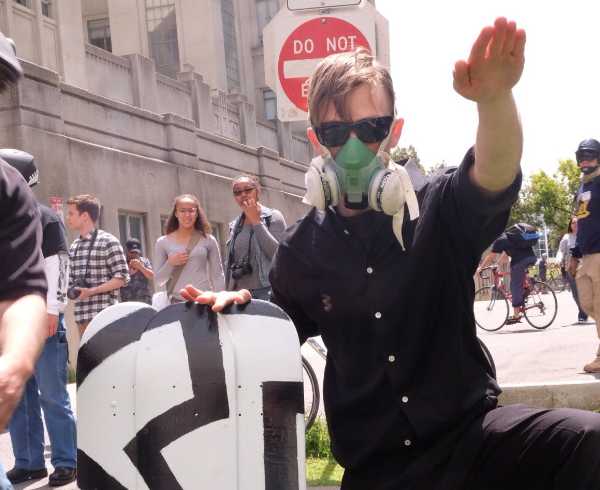It annoys me when I hear a politician justify doing something that is clearly illegal by saying that he would do it before he was elected. After Richard Nixon resigned as president, he was interviewed by David Frost. The most memorable thing that Nixon said during the interview was that nothing the president does can be illegal if he believes it to be in the best interests of the nation. That is how democracies become dictatorships.
The foundation of democratic government in Europe and the United States is the Magna Carta, and the big idea in the Magna Carta is this – no one is above the law. The law is something separate from and above even the king himself. The law is not simply whatever the king says it is. The head of state in a democracy cannot make ‘Heads will roll!’ the law of the land just because he is the head of state, and he said that ‘Head will roll!’ if he was elected.
HEADS WILL ROLL!
Have you ever heard the expression ‘Heads will roll!’? Here is the definition of that expression according to Google AI: “The idiom ‘heads will roll’ means that people will be severely punished, often by losing their jobs, due to a mistake or bad situation. The phrase is a metaphorical allusion to decapitation, likely inspired by the executions by guillotine during the French Revolution, where heads would roll after being severed.”
The expression ‘Heads will roll!” was first used during the French Revolution. By the 19th Century, it had become a common figure of speech. However, in1932, Adolf Hitler was the first person in history to use it as a campaign slogan. He said that if he came to power and people didn’t obey his orders, then “Heads will roll.” Since ‘Heads will roll!’ was just used at that time as a figure of speech, few people thought that Hitler meant that he literally intended to behead his enemies, however they were wrong. ‘Heads will roll!’ turned out to be a ‘promise made, promise kept.’ In 1933, as soon as Hitler was in power, he had his political opponents locked up. Thousands of them were beheaded. Many of these executions were carried out in Berlin’s Plötzensee Prison. Between 1933 and 1945, over 2,000 people were decapitated in Plötzensee alone. Countless others were beheaded elsewhere in Germany. Some of them belonged to resistance groups such as ‘the Red Orchestra’, but many had no political affiliations. When the people who carried out these executions were tried after the war, they frequently defended their actions by pointing out that Hitler said that ‘Head will roll!’ when he came to power. It was a: “Promise made; promise kept.” That defense didn’t work. As the judges at Nuremberg pointed out, committing a crime cannot be justified simply because you said you said you would commit the crime before you did it.

IS A LANDLORD RESPONSIBLE FOR GHOST REMOVAL?
The short answer is ‘No’, a landlord is not responsible for ghost removal. I know a landlord who has a tenant who wants to break his lease on the grounds that his apartment is “obviously haunted”, and he remembered that I once had a similar problem, which was true. I did.
Many years ago, I rented a small house to a young man. Soon after he moved in, he hired a psychic to analyze his new home. After walking through the house, the psychic told my tenant that the house had ‘bad vibrations’. The psychic told my tenant that living in a house with ‘bad vibrations’ was very bad for his health. The psychic concluded that my house urgently needed a $2,000 exorcism – to be performed by him. Sadly, my tenant believed him. He watched a number of movies recommended by the psychic about people dying or going insane living in a cursed building, including ‘The Shining.’ My tenant didn’t have $2,000 himself, so he asked me to pay for the exorcism. I said: “No.” He then went to the rent control board and asked them to order me to pay for the exorcism. Predictably, they refused to get involved. My guess is that they didn’t want to look ridiculous in the press. A month later, my tenant moved out.
This story is typical of how psychics and fortune tellers make money. They convince people that bad things are going to happen to them and that the only way to prevent these bad things from happening is by giving money to the psychic. It is my opinion that all professional psychics and fortune tellers are fakes and scoundrels.
I had a cousin who was a lawyer. He made a good living defending fortune tellers in court, and he did it for decades. I used to go to court to watch him in action. Here was advice my cousin gave from his experience representing landlords.
- Ask the tenant to put his request for an exorcism in writing and describe what happened that convinced him that his apartment is haunted. That usually puts an end to this. Nobody wants to feel foolish.
- Don’t give a tenant or a psychic any money for an exorcism. Some landlords have given a tenant money to pay for an exorcism just to keep the peace, but a landlord who pays for something like this is just setting himself up for a lot of trouble. By paying for an exorcism, a landlord is effectively acknowledging that there is something wrong with his building. After all, if there is nothing wrong with the building, then why is the landlord paying for an exorcism? Since there is no way for a landlord to prove that his building has been cleansed of supernatural spirits, he could have to continue paying ‘ghostbusters’ forever.



















